How do web3 games make money?
February 19 2025
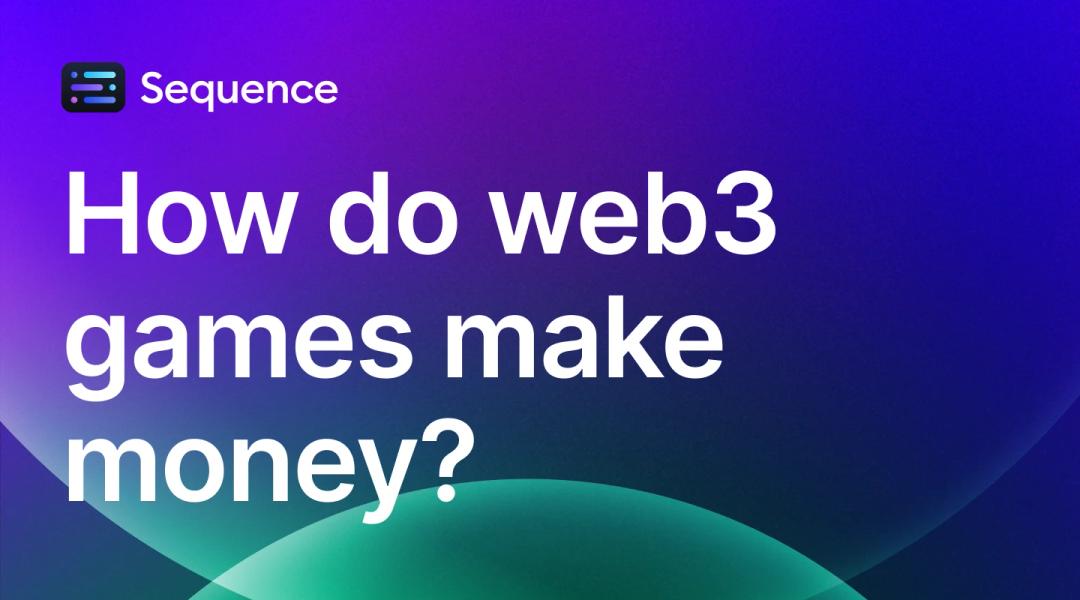
Web3 gaming has introduced a new paradigm for how games operate and generate revenue, leveraging blockchain technology to create decentralized economies and innovative business models.
While traditional games often rely on straightforward revenue streams such as upfront sales or in-app purchases, web3 games have far more dynamic options at their disposal, including NFT sales, governance tokens, and royalties from secondary markets.
Understanding how web3 games make money is crucial for developers looking to enter the space and build a sustainable business model.
By the end of this post, you’ll gain insight into the most popular monetization strategies in the web3 gaming ecosystem, from selling NFTs to recurring revenue models like battle passes, and how Sequence web3 development platform can help get started.
Key takeaways
- Web3 games can generate revenue through the sale of NFTs, which represent in-game assets that players can own in their web3 wallet and trade.
- Games can earn secondary market royalties, allowing web3 developers to take a percentage of every sale on NFT marketplaces.
- Recurring revenue can be achieved through subscription models, such as battle passes, which offer players access to exclusive content.
- Some web3 games monetize by selling early access or limited-edition NFTs that grant players special in-game privileges.
- Staking mechanisms, where players lock tokens to earn rewards, can provide an additional revenue stream while encouraging player retention.
- Launching a custom blockchain network allows games to collect transaction fees, providing a scalable and continuous income stream.
The evolution of game monetization
The gaming industry has experienced exponential growth in both revenue and the ways games are monetized. In 2023, the global gaming market reached a staggering $183.9 billion (Newzoo, Statista), a testament to its consistent year-on-year growth. By 2024, this number was set to surge to $281.77 billion, driven by increased player engagement across mobile, PC, and console platforms.
Mobile gaming projects currently accounts for nearly half of the market’s revenue, while PC and console gaming also continue to be significant contributors.
Initially, games followed a pay-to-play model, where players purchased physical or digital copies of games upfront. This evolved into the free-to-play (F2P) model, where players could access the core game for free but were encouraged to make in-game purchases for cosmetic upgrades, characters, or other enhancements. This model, popularized by games like Fortnite and League of Legends, became highly lucrative, allowing developers to generate recurring revenue through microtransactions and battle passes.
The introduction of live service games—which offer constant content updates and in-game purchases—further entrenched the F2P model as a dominant force. However, the advent of blockchain gaming represents the next frontier in-game monetization.
By leveraging blockchain technology, web3 games are moving beyond traditional microtransactions and introducing new revenue streams through the sale of in-game NFTs, decentralized economies, and token-based governance models. This shift allows players to own, trade, and even sell in-game assets, creating fresh opportunities for both developers and gamers alike.
Selling NFTs as in-game assets
A major revenue stream for web3 games is the primary sale of NFTs, which represent in-game assets like characters, skins, items, or virtual real estate. By offering these assets as NFTs, games enable players to have true ownership over digital items. Unlike traditional games, where in-game purchases are restricted to the game environment, NFT-based assets can be traded or sold outside the game, creating real-world value for players.

Sale Contracts and Audience are now available on Sequence Builder and offer a powerful way to manage primary NFT sales and target the right participants.
For example, Ubisoft’s Captain Laserhawk: the G.A.M.E. monetizes through the primary sale of NFT characters which players purchase to participate in gameplay. Players invest in these NFTs both for gameplay and for their potential to appreciate due to scarcity and demand.
Another example comes from Sunflower Land, which generates revenue by selling NFT farming products and characters. Players buy them to expand their farming empire. These initial NFT sales might help raise significant revenue for the game, as players can acquire valuable assets that provide advantages within the game world and could be traded later for profit.
By focusing on the primary sale of NFTs, web3 games secure revenue upfront by offering exclusive, limited edition items or valuable in-game assets. This creates an immediate revenue stream for developers and a sense of investment for players.
Marketplace fees and royalties
One of the most powerful revenue models in web3 gaming is the ability to generate ongoing income from secondary sales of in-game assets through marketplace fees and royalties. Unlike traditional games, where purchases remain locked in the game, web3 games allow players to trade their assets across various NFT marketplaces. Whenever an in-game NFT, such as a card, character, or weapon, is traded on any compatible marketplace, developers can collect a percentage of the sale, ensuring a continuous revenue stream.
Pirate Nation allows players to trade their NFT assets—such as ships and characters—on various secondary markets. Each time these assets are sold, regardless of where the transaction occurs, the game’s developers collect a fee. This system fosters a decentralized economy where players have the freedom to trade on the marketplace of their choice, while developers maintain a consistent revenue stream through royalty payments.
By incorporating marketplace fees and royalties across multiple platforms, web3 games create long-term revenue opportunities beyond initial sales. This model empowers players with assets ownership, while developers continue to benefit from the vibrant, player-driven economies these games create.
Tokenomics and governance tokens
Many web3 games generate revenue through the issuance of tokens, which not only give players influence over the game’s future but also serve as a key element of the in-game economy. Rather than relying on older models like initial coin offerings (ICOs), today’s games often distribute tokens through approaches that allow developers to build a loyal player base while raising funds for ongoing development.
A popular method of token distribution is through airdrops, where governance tokens are freely distributed to early players, community members, or NFT holders. This incentivizes early adoption and fosters a sense of ownership among players, as they receive tokens that can later be used for governance, staking, or in-game purchases. For example, Axie Infinity airdropped its AXS tokens to early adopters and players who contributed to the game’s ecosystem.
Tokenomics provides web3 games with a sustainable revenue model. These tokens often have real-world value and can be traded on exchanges, giving players additional financial incentives to engage in the game. Developers, in turn, benefit from the increased demand for their tokens, which helps fund ongoing development and expansion.
Battle passes and in-game subscription models
In addition to tokenomics and NFT sales, web3 games are increasingly adopting battle passes and in-game subscription models as reliable sources of recurring revenue. These models offer players exclusive content, rewards, and in-game items in exchange for a subscription fee or the purchase of a time-limited pass.
A great example of this is Skyweaver, which offers a seasonal Skypass. The Skypass allows players to unlock exclusive in-game rewards by completing challenges and ranking up during each season. This model not only encourages regular player engagement but also creates a steady revenue stream for the game. By offering exclusive, time-limited rewards, players are incentivized to purchase the pass to gain access to rare or unique items, driving both participation and sales.
Another benefit of this model is its potential integration with blockchain platforms and elements. For instance, items unlocked through battle passes can be issued as NFTs, allowing players to trade or sell their rewards in secondary markets. This adds value to the player's investments and creates opportunities for continued engagement, as the rewards hold real-world value beyond the game itself.
In-game subscription models or battle passes also help maintain long-term player retention by rewarding consistent play. Regular content updates tied to these passes ensure that players have a reason to return to the game, creating both a sustainable revenue stream for developers and a more active in-game economy.
Selling game access
In contrast to the free-to-play models common in traditional gaming, some web3 games monetize by selling access to the game itself. This can be done through the sale of NFTs that serve as access passes or limited-edition tokens that grant exclusive privileges. By selling game access upfront, developers can generate revenue early while creating a sense of exclusivity and community among early adopters.
A notable example is Illuvium, which used NFT sales to grant players early access to the game. These NFTs, sold during the game’s development, not only allowed players to enter the game before its official launch but also provided unique in-game benefits. This approach gave players a sense of being part of an exclusive group, while the developers secured funding to continue building and expanding the game.
Launching a custom blockchain and collecting transaction fees
An advanced monetization strategy for web3 games is launching a custom blockchain dedicated to the game’s ecosystem. This allows developers to control the game’s infrastructure while collecting transaction fees from every activity that takes place on the blockchain. By creating a custom chain, developers can build a self-sustaining economy and capture revenue from the ongoing interactions within the game.
One of the key benefits of launching a custom blockchain is avoiding the high gas fees and limitations associated with using public blockchains. By developing a dedicated network, developers can set lower transaction fees tailored to the needs of the game’s economy. This can include fees for minting NFTs, trading assets, or any other transaction in the game. As players engage in the web3 ecosystem, developers earn a percentage from each transaction, creating a steady revenue stream.
Additionally, games that launch their own chain can incorporate staking and validator rewards. Players can be incentivized to become validators on the game’s blockchain, helping to verify transactions in exchange for a portion of the fees. This decentralizes the game’s network while rewarding players for their contributions, adding another source of engagement and revenue for both the game and its community.
How to start monetizing your web3 game with Sequence development platform
Whether you're selling NFTs, launching a custom marketplace, or setting up seamless payments, Sequence web3 game development platform has everything you need to build a successful and sustainable game economy. With Sequence, you can:
- Launch your own NFT marketplace in minutes.
- Integrate payment systems that accept both crypto and credit card transactions.
- Easily manage your game’s custom blockchain and start collecting transaction fees.
Start building your web3 game today with Sequence’s powerful web3 gaming stack at www.sequence.xyz
Sequence makes building onchain simple. Developers and teams can launch, grow, and monetize apps with unified wallets, 1-click cross-chain transactions, and real-time data, all in a modular and secure stack. No more stitching together fragmented tools or battling poor user flows. Sequence is production-ready infrastructure that helps teams ship faster, onboard more users, and scale confidently. From chains and stablecoins to DeFi and gaming, Sequence powers developers and applications across the EVM ecosystem with billions in transaction volume and millions of users. Trusted by leaders in blockchain, Sequence powers today’s onchain apps and delivers future-proof infrastructure for tomorrow’s breakthroughs. Learn more at sequence.xyz.
Written by

Sequence team
Sequence logoRelated Posts
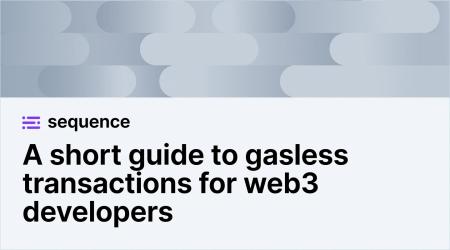
A short guide that explains exactly what gasless transactions are, and why they matter for your web3 experience.
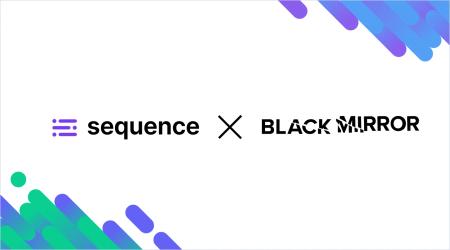
In partnership with KOR Protocol, Sequence and Msquared, Black Mirror's franchise has launched the $MIRROR token and a new web3 experience!
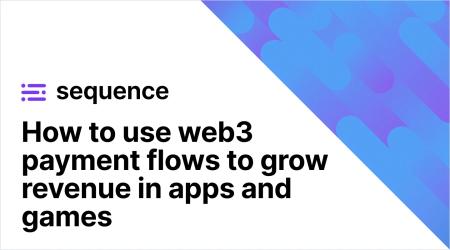
Web3 payment flows allow any app to embed onchain purchases and interactions in a way that feels natural for users. Learn more about them!
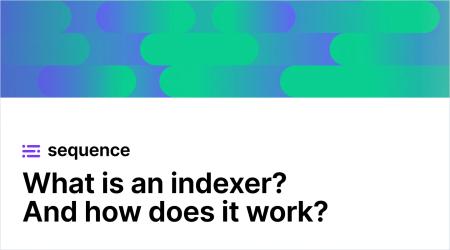
As more applications and protocols move onchain, indexers redefine how dev teams access, organize, and use blockchain data. Learn how!




